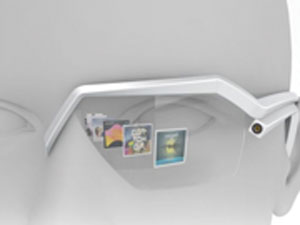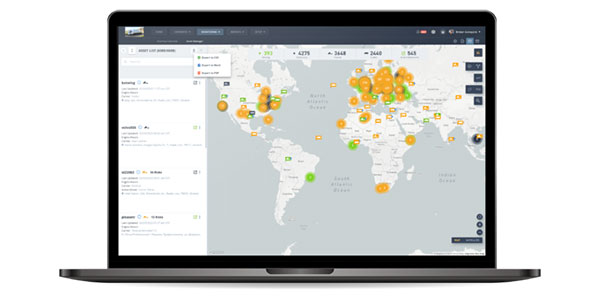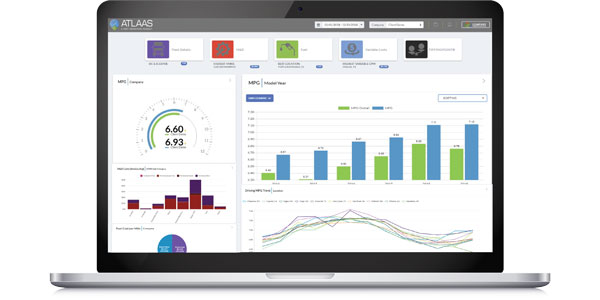Charles Arsenault, CEO emeritus of Arsenault Associates, reports that according to numerous news sources, the project involves a computer built into eyeglasses that will run Android, will include a small screen in front of your eye, and will have motion sensors, GPS, Wi-Fi, and 3G or 4G data connections. The glasses will accept spoken input and commands through voice recognition. They may also be controllable through eye movements and blinks.

The glasses offer what is known as a heads-up view—named for the projections on jet fighter windshields that enable a pilot to see critical instrument readings on the glass even as he surveys the sky in his flight path. Google Glasses will be on sale to the public beginning in 2014. They will be available to select developers early in 2013. The initial price will be over $1,000, however, Arsenault expects it will drop to between $200-$300 within five years.
“The first applications will likely be for mass audiences—consumers and users of social media,” he says. “Not long after that, more specialized, business-oriented applications will begin to appear.”
Trucking applications that first come to mind include driver navigation displays. But also think of a fork lift driver in an LTL cross-dock operation who can always see where on the dock to find any piece of scanned freight—or another forklift that might be around a corner. The same idea will apply in virtually any warehouse. But perhaps the most fruitful application of heads-up display glasses will be in maintenance.
“Imagine you’re a technician and you’ve walked up to a truck parked in the yard,” Arsenault said. “Of course, your safety glasses told you exactly where it would be. But as you approach, the vehicle identifies itself by RFID (Radio Frequency Identification). Along with that identification, you have access to all sorts of information. At your option, using your voice, you can call up the truck’s specifications, detailed components, and more.”
This information will be provided by a fleet’s maintenance management software, Dossier for example. That being the case, one will also be able to see the truck’s maintenance history. If maintenance information such as mileage and tire tread depths is not transmitted to the maintenance server automatically, the user can read the information aloud, entering it into the records by voice. Similarly, one can walk around the truck recording a physical inspection, notating issues or findings.
Those are some obvious uses for heads-up glasses. Let’s look at how they will enable quicker, better repairs and generally increase the productivity of the mechanic and reduce equipment downtime.
Here’s how Arsenault sees it working:
Let’s say the truck comes into shop with a driver complaint of an engine overheating problem. By voice, you call up the unit’s maintenance history. You also can see current work pending and other issues that have been automatically identified and reported by onboard diagnostic applications and reported in real time by Networkfleet, Qualcomm, PeopleNet, or another communications solution to your maintenance software, Dossier Onboard, for example. You also can see driver comments and complaints about the unit.
Now you are a fully informed technician. You don’t have to walk over to the computer or to the boss’s office to look at the reports. You can call them up and see them right there in your field of vision. More than that, you also can call up digitized manuals, even step-by-step instructions with pictures or diagrams. If you have questions, you can talk with the maintenance manager while standing in front of the unit and show him a live streaming image of the problem at hand, as the glasses also act as your wireless video/cell phone.

Now you’re ready to address the issue. Imagine seeing a diagram superimposed in your line of sight directly over the real components in the truck you’re working on. Indeed, you can have virtually all the information you need—words and pictures—instantly available as you work, right there in front of you.
You can initiate a new repair order by voice, or you can say something like “open repair order number such-and-such” to see a detailed history. In Dossier, you would have the repair order number from the history instant recall preview.
You will ID the areas to be repaired by applying the VMRS (Vehicle Maintenance Reporting Standards) codes, say, 042 for engine cooling system work, and work accomplished code 08 for overhaul. Of course, if you don’t know the codes, you can call them up and see them displayed on your heads-up safety glasses and select the appropriate codes.
Meanwhile, the shop computer or server does what I call assumption data entry. The safety glasses assigned to you, say as Joe, mechanic number 23, provide your data, which is recorded automatically into the repair order. Much of the basic truck data, with the exception of current mileage and other updateable information, also is entered automatically. Of course, the glasses—or the computer/phone they’re linked to—know the date and time and location.
Now you are working on the vehicle with your hands while calling up critical information. You’re looking directly at the work at hand while the heads-up display shows whatever information you require.
If you see that you need part number 456, you can check availability with a voice command. If it’s in inventory, you can reserve it or pick it up. Your maintenance software automatically applies that part to the vehicle you’re working on and deducts it from inventory.
By the way, you’ll identify parts without error by barcode. Your heads-up glasses will read barcodes just like a scanner. Why not? It will provide a real boost for the venerable barcode, which is nearly universal and much less expensive than RFID.
And when you’re done with the repair, you’ll call up the extended PM (Preventive Maintenance) service for the truck and do whatever work is called for. The pre-entered PM service template automatically enters text for the correct work performed, parts used and other data approved by you. You will enter any variation in materials or other information from the template data and then clock out of the job by voice.
So now you have resolved an overheating problem reported by the driver. You have performed a PM service and made a complete history of the work performed. Now perhaps you simply close the repair order with a voice command. Or maybe the repair order must be reviewed and closed by your supervisor after his inspection. Either way, you log out and proceed to your next job as directed by your boss and shown on your heads-up display.
The important thing is that you have done all this without walking around the shop to access the information you needed, or to confer with your boss about the right course of action, etc. You have found it all and entered all the job data from right beside—or inside, or under—the truck. You have thoroughly reported and documented a critical piece of vehicle history without actually writing anything.
If this was an accident repair, you would’ve also taken a before and after photo for insurance history purposes, all with your heads-up safety glasses and the efficiency they will offer.
Now imagine these same capabilities are available to a technician on the road or at a remote construction site through cellular communications.
Fantasy? Star Wars? No, just another innovation waiting for the right application inventor/integrator.
Editor’s note: Arsenault Associates developed and supports Dossier fleet maintenance management software.













